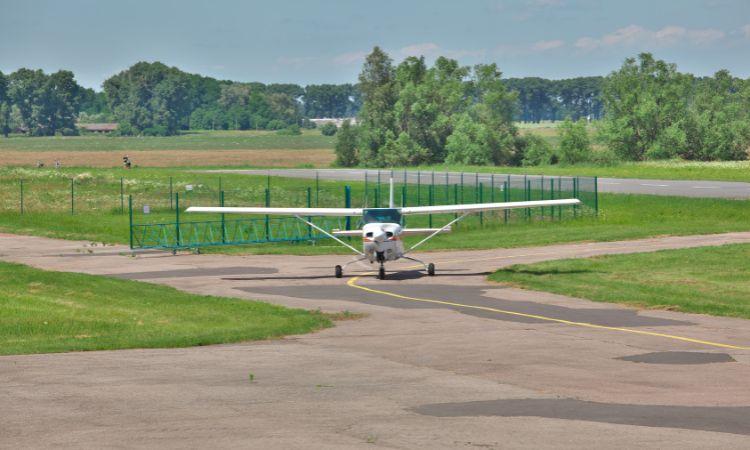The global general aviation market size attained a value of about USD 21.83 billion in 2023. The market is further expected to grow in the forecast period of 2024-2032 at a CAGR of 3.20% to reach nearly USD 29.03 billion by 2032. This significant growth reflects the increasing importance of general aviation, not just on a global scale, but also within the heart of local communities.
General aviation, encompassing all civil aviation operations excluding scheduled airlines and military flights, plays a vital role in driving economic activity and supporting local communities. This blog post delves into the multifaceted ways general aviation serves as an engine for local economies, fostering business development, creating jobs, and providing essential services.
Contributions to the Local Economic Engine
The economic impact of general aviation is far-reaching. Directly, it generates a significant number of jobs. Fixed-base operators (FBOs), maintenance facilities, flight schools, and other aviation-related businesses employ a skilled workforce. Additionally, general aviation airports require staff for air traffic control, security, and maintenance, further bolstering local employment opportunities.
Beyond direct employment, general aviation spurs indirect economic benefits. Increased tourism is a prime example. Tourists often utilize general aviation for scenic flights, accessing remote destinations, or flying into smaller airports closer to vacation spots. This influx of visitors translates into increased revenue for hotels, restaurants, and local attractions. Similarly, general aviation facilitates business development. Business leaders rely on general aviation for efficient transportation, allowing for face-to-face meetings, site visits, and the timely delivery of goods, contributing to the overall growth of local businesses.
Taking Flight: The Importance of Local Airports
Local airports served by general aviation act as vital hubs for businesses and industries. These airports provide convenient access points for essential services and the movement of goods. For instance, agricultural operations utilize general aviation for crop dusting and aerial monitoring, which in turn enhances agricultural productivity and yield.
Investing in airport infrastructure and facilities to accommodate general aviation traffic is crucial. Upgraded runways, hangars, and navigation systems attract more aircraft and businesses, further stimulating the local economy.
Business on the Move: How General Aviation Empowers Local Businesses
Business aviation, a segment of general aviation, plays a critical role in supporting local businesses. It allows for the efficient transportation of personnel, enabling quick visits to remote locations, meetings with clients in different cities, and the delivery of time-sensitive materials. This agility empowers businesses to operate more effectively, expand their reach, and maintain a competitive edge.
Several industries rely heavily on business aviation. Manufacturing companies, for instance, utilize it to transport engineers and executives to oversee production facilities in different locations. Similarly, medical professionals in specialized fields depend on air travel to reach patients in remote areas or provide critical consultations at distant hospitals.
Beyond the Hangar: General Aviation Services Fuel the Economy
A network of businesses caters to the needs of general aviation, forming a crucial economic ecosystem within local communities. Fixed-base operators (FBOs) act as one-stop shops for aircraft fueling, maintenance, hangaring, and flight planning services. Maintenance facilities provide essential upkeep for aircraft, ensuring optimal safety and performance. Flight schools train future pilots, nurturing a skilled workforce for the aviation industry.
These general aviation services generate substantial economic activity. FBOs pay rent and taxes, contributing to local revenue streams. Maintenance facilities employ technicians and mechanics, creating high-skilled jobs. Flight schools attract students, generating income and fostering a local aviation culture.
Soaring Benefits: Beyond the Economic Horizon
The positive impact of general aviation extends beyond purely economic benefits. Local communities gain access to essential services such as emergency medical services (EMS) through general aviation. EMS helicopters can quickly transport critically ill or injured patients to specialized medical facilities, potentially saving lives.
General aviation also plays a vital role during disaster relief efforts. It allows for aerial search and rescue operations, facilitates the delivery of aid to remote areas, and enables rapid damage assessment following natural disasters.
Real-World Takeoff: Case Studies in Success
Numerous communities demonstrate the economic benefits of a thriving general aviation sector. Studies in Texas, for instance, revealed that general aviation airports supported over 61,900 jobs and generated a payroll exceeding $2.5 billion. These figures highlight the substantial employment opportunities and economic output associated with general aviation.
Furthermore, communities that invest in their general aviation infrastructure often witness a surge in tourism and business activity. For example, a local airport with upgraded facilities might attract new FBOs and maintenance companies, creating jobs and fostering a hub for aviation-related businesses.
Navigating Challenges and Embracing Opportunities
Despite its positive impact, general aviation faces several challenges. Regulatory hurdles and infrastructure limitations can hinder growth. Regulatory hurdles and infrastructure limitations can hinder growth. Complex regulations and permitting processes can make it difficult for airports and businesses to expand their operations. Additionally, aging infrastructure at some general aviation airports may not meet the evolving needs of modern aircraft and technology.
However, these challenges present opportunities for innovation and collaboration. Streamlining regulations and adopting new technologies can expedite permitting processes and enhance operational efficiency. Furthermore, local communities can work with the aviation industry to invest in infrastructure upgrades, ensuring airports remain competitive and well-equipped to serve the growing general aviation market.
Collaboration for Takeoff: Partnerships for Success
Fostering a strong relationship between local governments, businesses, and aviation stakeholders is crucial for supporting general aviation. Collaborative efforts can lead to the development of strategic plans that promote the growth of the general aviation sector and its integration into the broader local economy.
Examples of successful partnerships abound. Community-driven initiatives that prioritize infrastructure improvements, pilot training programs, and education about the benefits of general aviation can significantly strengthen local economies.

